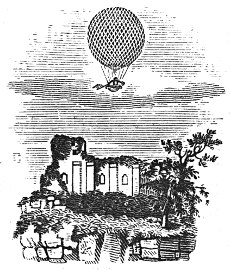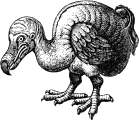The Devil’s Artisan
‘Though an angel should write, / still ’tis devils must print.’
— Thomas Moore (1779–1852)
DINGBATS SECTION

When we first started digitizing this archive in the fall of 2009, the images were primarily typographic. Headpieces, and tails, and ornamental initials. Then we gradually began to add ‘other stuff’. Insects and birds, fish and mammals, and oddities of various sorts to the point the archive now resembles a Museum of Natural History as it was, perhaps, at the close of the nineteenth century. Dusty, and filled with wonders in specimen drawers and glass display cases. Not dissimilar, in many ways, from the Museum on Parks Road in Oxford whose corporate symbol is the Dodo.
Browse the categories to the right to discover hundreds of free images for use in design projects. Click thumbnails of the images to view & download.
We ask that you credit ‘Walter Inkster, the Devil’s Artisan’. (Read “The Story Behind the Dingbats” below to find out why.)
The Story Behind the Dingbats
Elke and I moved from the City of Toronto to Erin Village in the fall of 1971. We were surprised, at first, at the isolation of our situation — a mere sixty miles north-west of the corner of Steeles and Islington, but a world removed from the student life we had come to know at University College in the University of Toronto in the late sixties.

The Main Street of Erin Village backs on to a millpond that was flooded in the mid-nineteenth century to further the commercial interests of Mundell Lumber, which continues to retail dry goods into the early part of the twenty-first century. West of the millpond and rising above it 250 vertical feet there is a sizeable glacial `moraine'—millions of tons of dolomite (mostly) furrowed out of the Credit River Valley ten thousand years earlier and pushed up into a modest sequence of rolling hills.
Elke and I walked those hills, frequently, in the fall of 1971, and one day we happened on the stone foundation of a barn that had fallen into ruin. In the foundation there were boxes,
and boxes, and boxes of books.
Hundreds of copies in fact of John Bunyan's Pilgrim's Progress amongst other titles that were of little interest except that some of the multiple editions of Pilgrim's Progress had been typeset rather well, with intriguing ornaments such as you see here.
Encouraged by the prospect of the ornaments, I salvaged several dozen boxes of several thousand books which included several tens of thousands of engravings from the ruins of the barn. Some years later, my father Walt found himself unexpectedly dismissed from a high-tech job at Bell-Northern Research laboratories in Ottawa.
The thought occurred (to me) that Walt should have something thrust immediately in his lap to divert his attention from his situation. I suggested Walt undertake to extract (with scissors, and paste) the initials, engravings and ornaments found in the books,
and to categorize same (a not-inconsiderable task).

The Devil's Artisan intends to present an ever-larger digital library of these images, available at no charge for download as shareware, for the favour of which we would appreciate a credit to `Walter Inkster, the Devil's Artisan'.
It amuses me, some, that these images are now to be made available on the World Wide Web, and that my father was prematurely dismissed for insisting that the future of Bell Telephone lay in the direction of fibre optics.
My father, as it turns out, was correct.
—Tim Inkster
The Devil’s Artisan would like to acknowledge the generous financial support of the Canada Council for the Arts and the Ontario Arts Council.
